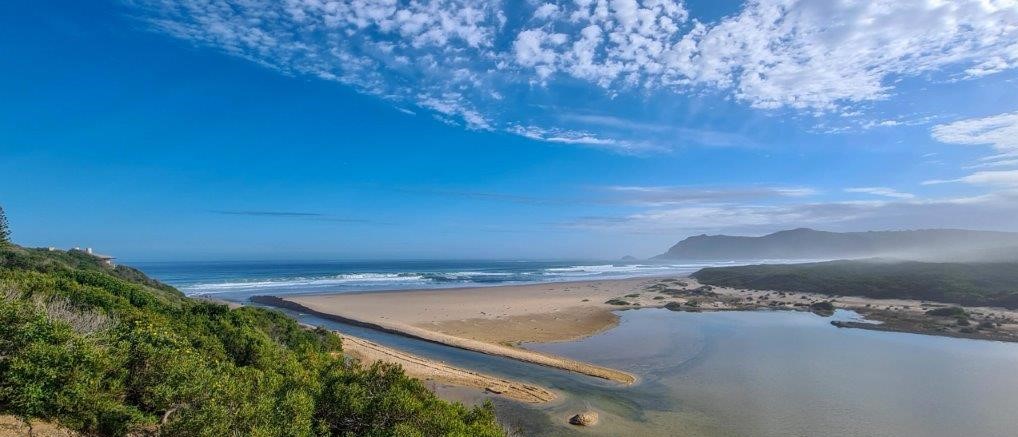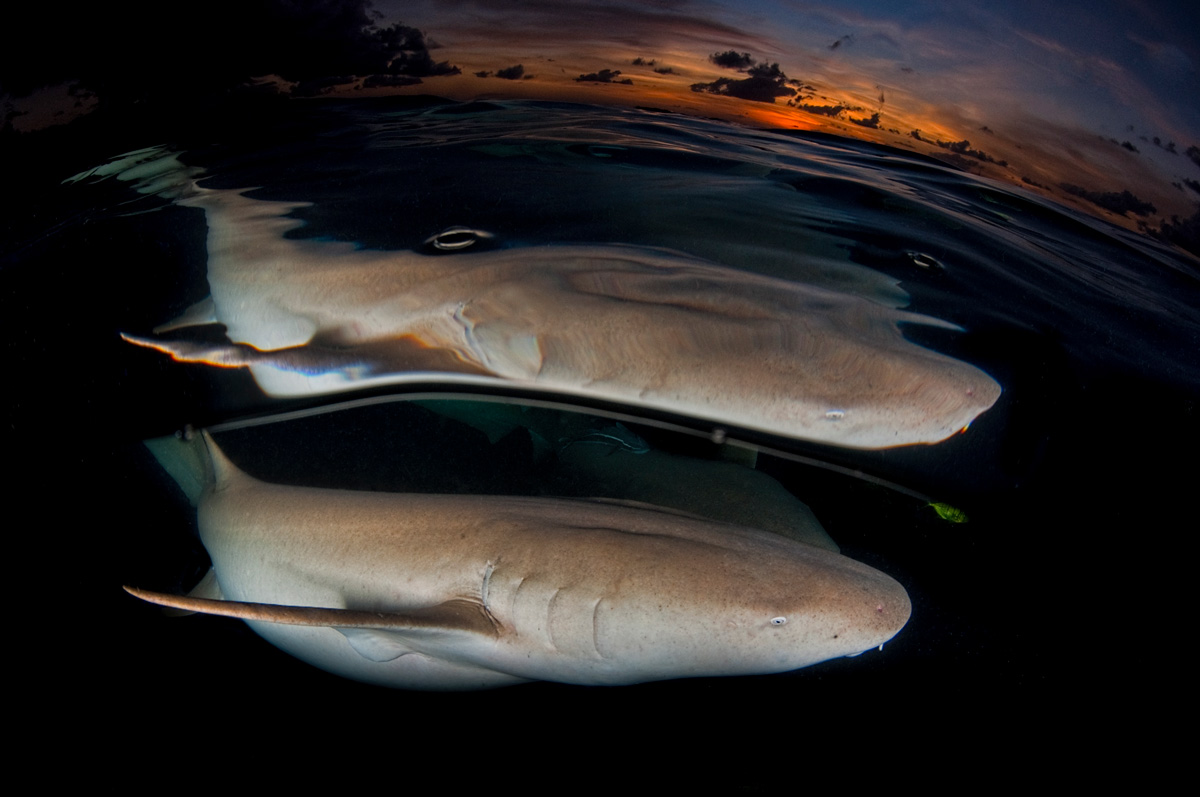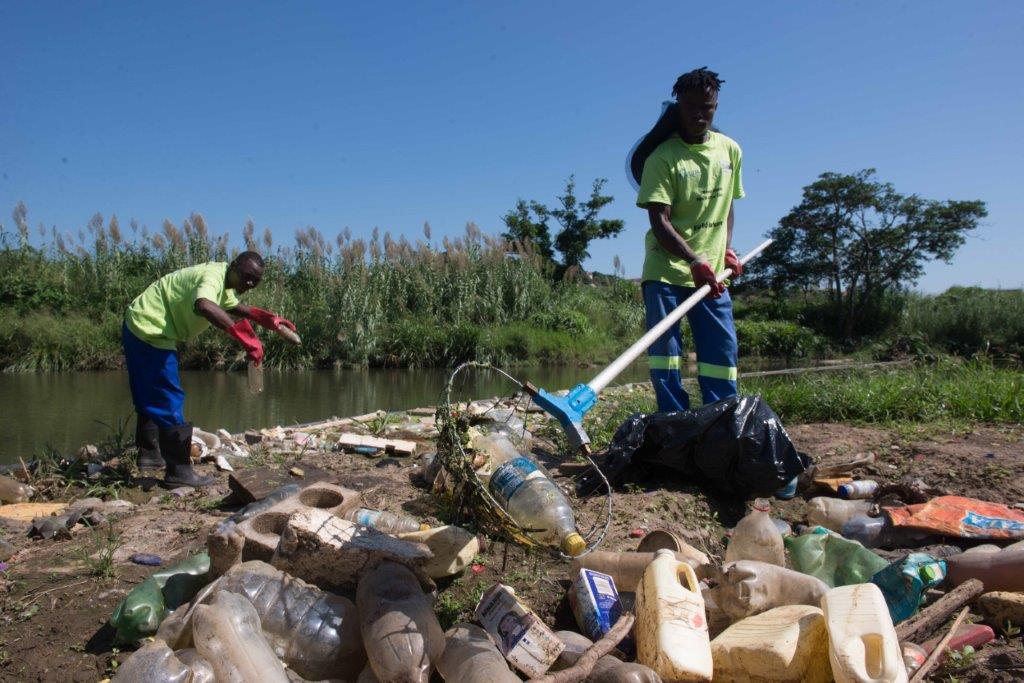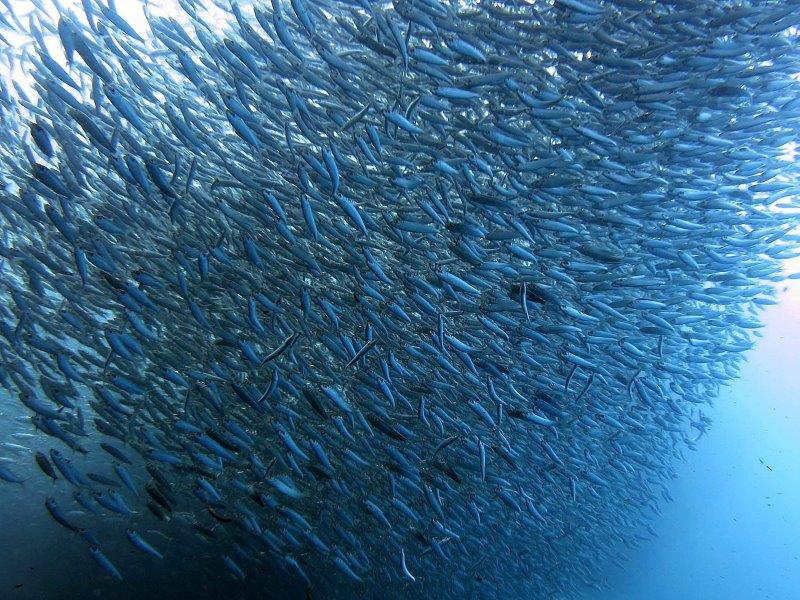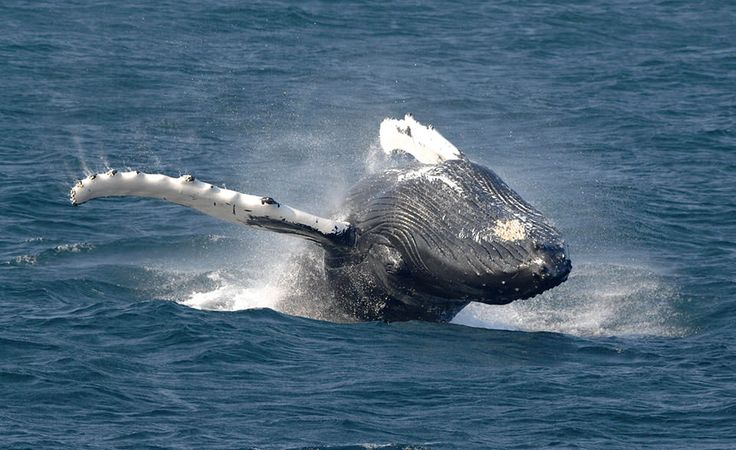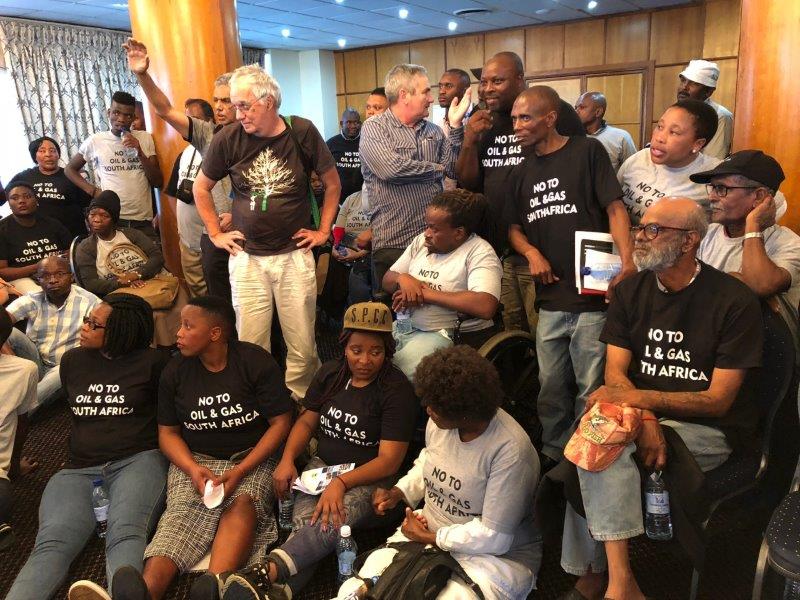Rio Button reports from the Southern Cape on a citizen science mercy mission.
First published by Daily Maverick
At 3.30 am on Tuesday last week, after many months of watching and waiting, the big excavator rumbles into life, tearing open the last bit of sand separating Swartvlei estuary from the sea. Over the next few days water levels in the estuary, a popular watersports and beauty spot on the doorstep of the holiday town of Sedgefield, begin to drop.

Seagrass and other aquatic plants became exposed in the shallows. By Friday, citizen scientist volunteers were finding Knysna seahorses (Hippocampus capensis) lying motionless, their prehensile tails wrapped tightly around the plants. Without water, these cryptic creatures will dehydrate and die so the rescue work continues well into the weekend.
It wasn’t easy. Knysna seahorses are kings of camouflage which helps them to ambush their zooplankton prey and to avoid being eaten by fish and birds. But, it also makes monitoring their populations and finding them when they are stranded, tricky; the little animals (adults range from 5 to 12cm) are exceedingly difficult to spot.
How many of these seahorses survive in the wild is the subject of continuing research. They are classified as endangered and found only within a 70km stretch of the Southern Cape coast – and here only in three estuaries. It gives them the unique distinction of being the only seashores that don’t actually live in the sea.
Pickle unpacked
So how precisely did these estuarine seahorses come to be in a pickle? Swartvlei is typically closed to the sea for five to nine months a year. It’s partly a matter of times, tides and upstream rainfall. But SANParks, the national parks agency that ordered in the excavator, must balance ecological and other needs. Sometimes this demands artificially breaching the estuary.
Last Tuesday the Swartvlei’s waters had reached the threshold: 1cm shy of the authorised breaching height – which as every resident of Sedgefield will tell you, is 2.0-metres above mean sea level. The spring high tide was retreating and the sea calm, ideal conditions for flushing out as much sediment from the estuary floor as possible. If breached too early the estuary may not stay open long enough for sufficient sediment to be removed. It then becomes shallower and more likely to burst its banks, flooding surrounding low-lying areas.
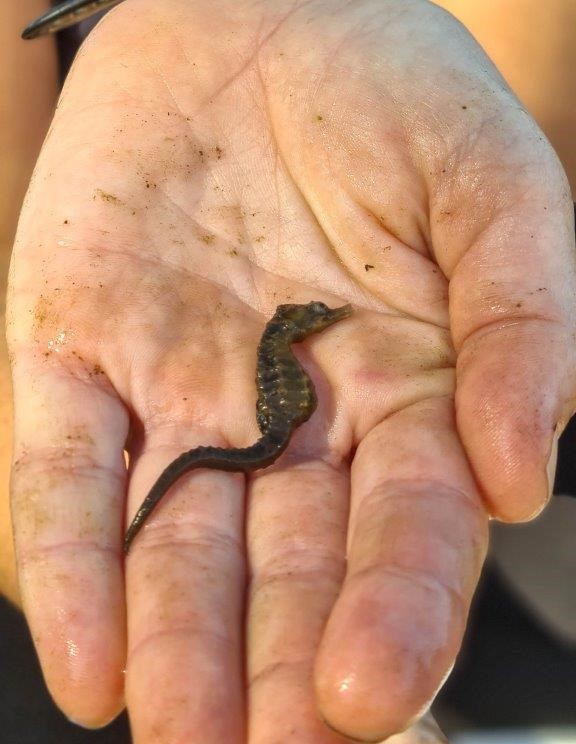
Compromise needed
Jonathan Britton, SANParks marine ranger, tells me that intervention was unavoidable because the agency was managing a “compromised system”. “The development of low lying properties on the floodplains have resulted in a situation in which a compromise is needed. The estuary needs to be mechanically breached to balance ecological, social and hydrological needs, as it’s currently not possible for the system to function naturally,” he says.
He explains that studies from South Africa and Australia have shown that temporarily closed estuaries, like Swartvlei, should generally be left to open and close naturally. But if conditions are altered and the natural functioning of the estuary can’t be maintained, the best management strategy generally becomes artificially opening the estuary to the sea.

Britton tells me that in this case there had been no public pressure to open Swartvlei estuary and confirms that regulations had been in place for several decades that allowed artificial breaching when the water level in the estuary reaches 2-metres above mean sea level. This is done largely to prevent severe flooding which occurs during heavy rains when the estuary is closed.
Rain data from weather stations in the Swartvlei catchment areas help predict the water level and guide SANParks decisions. Although opening the estuary to the sea reduces the risk of flooding, this risk can’t be entirely mitigated, especially with climate models predicting an increased risk of coastal flooding in the region.
So that the estuary could be opened without delay once the time was right, SANParks dug a preparatory channel months before. This meant the excavator was able to finish its work on Tuesday morning in less than 45 minutes instead of the 10 hours it would have taken to do the job from scratch. Despite no rain predicted, the decision to open the mouth was made because the water level was exceedingly close to the threshold and the ocean conditions were ideal. Having the estuary open to the sea serves not only to reduce flood risks: it maintains the ecological integrity of the system and has social benefits too.

Allen van Rooyen was among those who welcomed the breach. “I will catch more fish and types of fish now that the [estuary] mouth is open because fish come in from the sea,” the 65-year-old tells me as she sits on the bank with friends baiting a handline with sand prawns.
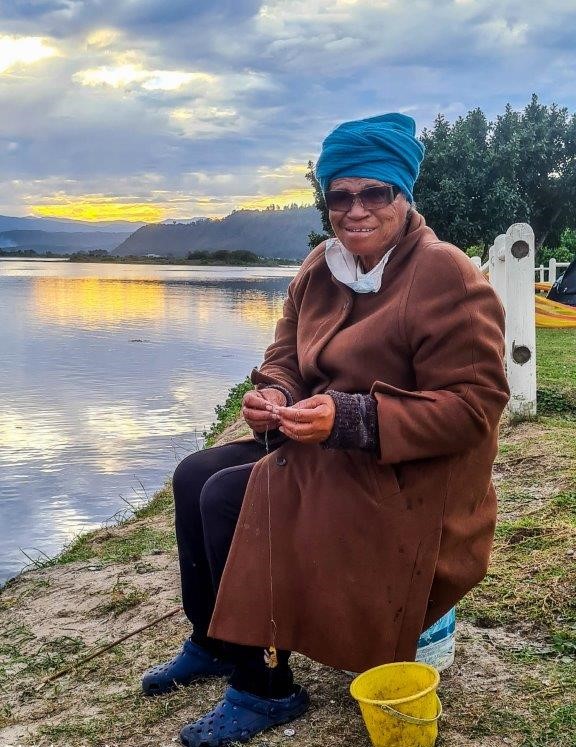
Van Rooyen lives in Smutsville, a Sedgefield settlement east of the estuary. With a lifetime of practice, she whirls the line around her finger releasing it at just the right moment for the baited hook to fly through the air and plop into the channel. Minutes later she pulls in a small Cape stumpnose (Rhabdosargus holubi); it’s too small to eat so she releases it. Fishing is part of the cultural fabric of the community. The estuary is used by recreational and subsistence fishers, from a variety of backgrounds – some well off, others less; some live nearby, others are holidaymakers.
Natural system
Fishing of course depends on there being fish, and the natural functioning of the estuary system is key to maintaining healthy fish populations. Many fish species come into the estuary when the mouth is open, some to breed, as the estuary’s vegetation gives juvenile fish somewhere to hide.
When the estuary is closed juvenile fish are also protected from ocean predators. Closed, the estuary provides stable conditions which allow microscopic plant life to flourish, providing more food for invertebrates and small fish. This abundance in turn provides more food for birds and bigger fish.
“The closed period is actually very productive for the estuary, but often misunderstood for being stagnant and lifeless,” SANParks Scientific Services marine biologist Clement Arendse explains. Both the open and closed phase of the estuary is part of the natural functioning of the system that maintains delicate food webs. “We manage the system holistically, not for the benefit of a single species, but rather so the system functions as naturally as possible,” Arendse says.
Are seahorse strandings natural?
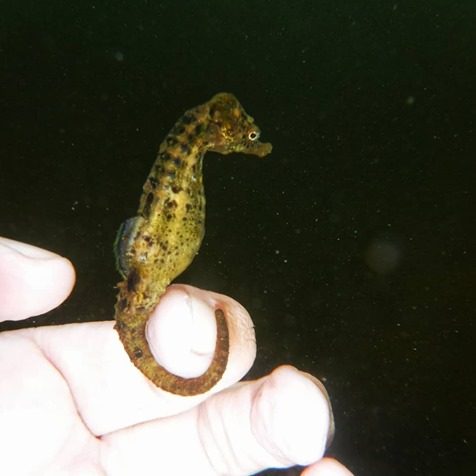
Seahorse strandings are part of the natural system, and even more seahorses may be left stranded if the system was left to open naturally. Without interference, the estuary would likely break through to the sea once its water level reaches around 3.0-metres above mean annual sea level – typically the height of the sandbank that closes the estuary to the sea. If it was left to reach 3.0-metres, it would ultimately result in a greater drop in the water level, possibly leaving more seahorses stranded, Arendse explains.
Arendse has the tricky task of investigating what affects the population size and how many of these difficult-to-spot seahorses are likely to be straded. He has been collecting information on environmental factors, including water levels, as well as monitoring seahorse population sizes using a variety of techniques, including snorkelling, scuba diving, using small seine nets and underwater video footage.
Citizen science
He tells me previous estuary openings have resulted in between 10 and 1,000 seahorses stranding. He praised his team of dedicated citizen scientists for their help with monitoring the number of seahorses stranded – and finding and returning as many as possible to the water.
Hearsay suggested to Arendse, a newly appointed SANParks marine biologist at the time, that the seahorse population was high in 2017. So before the estuary opened, Arendse rallied and revived the Seahorse Citizen Science Programme that had been active in the early 2000s but had faded away after more than a decade of low stranding numbers.
It was a good thing he did because that year over 1,000 stranded seahorses were found by his team of citizen scientists, half were still alive and returned to the safety of submerged seagrass. The remaining seahorses were donated to science, so their bodies could be used to understand more about the wild populations of these mysterious little creatures.
Covid complicates things
Most years Arendse calls upon his network of more than 200 seahorse citizen scientists and puts out calls to local news platforms for others to join his programme, but this year Covid-19 regulations meant he could not let all the existing citizen scientists participate.

SANParks requests that people don’t handle seahorses outside of the programme because it risks the loss of valuable information about seahorse populations, stranding numbers and distributions, affecting future species management planning. Seahorses are a prohibited species under the Marine Living Resources Act which makes handling or being in possession of seahorses without a permit, illegal.
This year I was one of the seahorse citizen scientists, a SANParks official took my temperature and then I was issued with a temporary permit allowing me to handle seahorses for the day. SANParks honorary ranger of 12 years, Joan Musto, led our group of citizen scientists to a section of the estuary bank and we began searching in the slippery, slightly smelly seagrass, picking out seahorses and putting them in our little buckets filled with water.

The citizen scientists spent three days scooping up seahorses and returning them to the water. All of the stranded seahorses I picked out of the seagrass eventually started swimming upright in my bucket. For lack of anything else to hold onto in the bucket two of them linked tails and held on tightly to each other for a time. Wading out to a deep patch of seagrass, I released each of them, watching them daintily flutter down until they disappeared into the grass. – Roving Reporters
- This Ocean Watch story forms part of Roving Reporters’ biodiversity writing project supported by Youth4MPAs and the Earth Journalism Network. Rio Button is a marine biologist, commercial diver and surfer, she has a Master of Science degree in Conservation Biology from the University of Cape Town. She is the chief conservation officer at Wildcards, a tech start-up connecting grass-roots conservation agencies with funding.
FEATURED IMAGE
